Motion sickness occurs when our eyes send our brain one message regarding motion and our inner ears send a different message.
There are two basic scenarios:
- We see that we are not moving but the brain senses motion.
For example, when we sit in the cabin of a ship, it appears to us (visually) that we are not moving but our inner ears sense that we are moving (the waves move the boat up and down). - We see that we are moving but the inner ears sense that we are still.
For example, when playing a virtual reality game, the action around us looks like we are moving, but we are actually sitting still.
Anyone can be susceptible to motion sickness. Children under two are generally resistant, then progressively more susceptible to age 9. After that, susceptibility tends to decrease as we age. Women, particularly pregnant women or those on birth control, tend to be more susceptible than men.
Prevention of motion sickness is usually more effective than trying to treat the symptoms after they develop.
“Physical” Prevention Techniques
- Looking at the horizon or a distant, stationary object and avoiding reading, looking at a screen, or performing close-up tasks.
- Sitting where movement is minimal. Front seats of cars and mid-ship/lower decks of boats.
- Driving a car, rather than being a passenger (provides more visual input to your brain that you are moving).
- Exposure to moving air, such as sitting near an open window.
Pressure Bands
- Acupressure bands worn on the wrists. There is more data on use of these bands in pregnancy, post-surgically, and with cancer chemotherapy than with motion sickness prevention, but some of our travelers swear by them. You can consider them if your usual motion sickness symptoms are mild. If you use pressure bands, you might want to take back-up treatment with you, in case they are not effective.
Ginger
- Again, there is variable evidence that ginger is better than placebo for motion sickness. If you are considering trying ginger, take one capsule/dose/hard candy (as per the manufacturer) or up to 1 gram of fresh ginger before travel. NOTE: Ginger may increase bleeding when used with Warfarin (Coumadin) and how it may alter blood clotting due to its effects on platelets, particularly if you already take aspirin or NSAIDs (Ibuprofen, Naprosyn, and others).
Antihistamines
- Sedating antihistamines are generally effective, non-sedating (Claritin, Allegra, Zyrtec, and others) are not.
- Dimenhydrinate (Dramamine) or Meclizine (Bonine), in doses anywhere from 6.25 mg to 25 mg, are generally the two antihistamines recommended for motion sickness, although chlorpheniramine (Chlor-Trimeton) and diphenhydramine (Benedryl) can also be used.
- Meclizine is only recommended for kids age 12 and over, due to a lack of studies in younger children. Dimenhydrinate, chlorpheniramine, and diphenhydramine can be used in age 2 and over, but your physician should be consulted when using between age 2 and 6.
- Meclizine and dimenhydrinate are considered OK for use in pregnancy.
- Often, travelers take decongestants (i.e.: pseudoephedrine) or caffeine with the antihistamines to decrease sedating effects. This can be helpful, but may be accompanied by other side effects and there are restrictions with use in children.
Scopolamine (Transderm Scop)
- A patch applied to the skin behind one ear that is effective in motion sickness prevention. The scopolamine patch is less effective for treatment of motion sickness than prevention. Since it must be applied 4 hours or more before travel (and changed every three days) and has several side effects, it is usually prescribed for longer boat/vehicle excursions when motion sickness is likely. Side effects include sedation, dry mouth, blurred vision, confusion, urinary retention, a rash at the patch site, and risk of acute elevation in eye pressure in someone at risk for narrow-angle glaucoma (Narrow Angle Glaucoma). Occasionally, “rebound” effect can occur after removing a patch. In this situation, a traveler can experience severe motion illness symptoms even if he or she is finished with their journey. This often needs to be treated with sedating antihistamines and can last hours, days, or even longer. Scopolamine is not recommended for use in pregnancy or in children under 12.
Promethazine (Phenergan)
- A Phenothiazine (anti-psychotic) medication with antihistamine properties used if other medications fail. Neurologic and other side effects make use of this medication uncommon. Promethazine for motion sickness is not recommended for use in pregnancy or in children under 2.
There are many other medications that are effective for nausea (Compazine, Zofran, others) that are not considered effective for motion sickness prevention.
One final note: my general recommendation to our Travel Clinic patients is: Take medication with you even if you think it is unlikely you’ll need it. Although past resistance to motion sickness is a pretty good predictor of future resistance, you never know!

